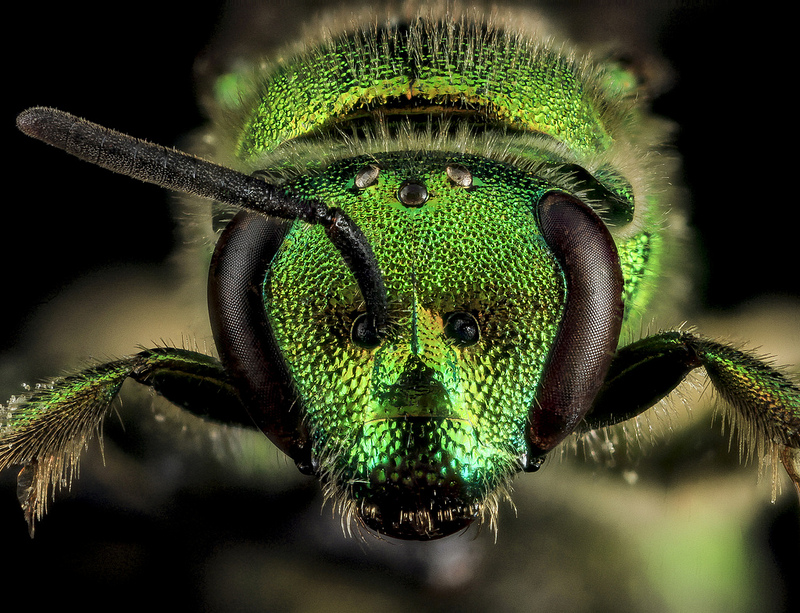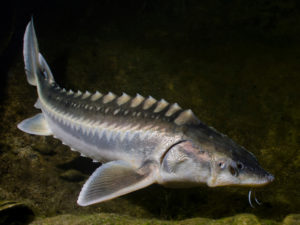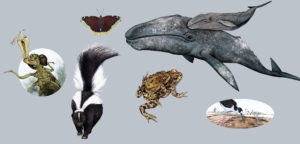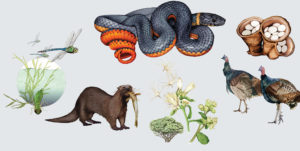Aaah, the Fourth of July. Who doesn’t love the fireworks, a day off work, the gratuitous meat-eating?
While the latter two may be more run-of-the-mill ways to celebrate an occasion, the booming kaleidoscopic displays are certainly a tradition that set the Fourth apart from other American holidays.
In honor of the turbulent birth of our nation, here’s a batch of six-legged arthropods you can find around the Bay Area that explode, glow, and flaunt their colors, proving that the animal kingdom doesn’t wait for a national holiday to put on a show. It’s always on display, in its own impressive way.
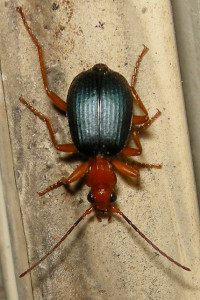
BOOM!!!
If you had a superpower, would it be the ability to blast noxious, 100° C fluid from your anus into the face of your attacker — and have dead-on aim, to boot? If yes, you’d have to have the silhouette of a bombardier beetle emblazoned on your costume’s chest plate. Or wherever.
These beetles have a two-chambered gland- one contains hydrogen peroxide and hydroquinones, and the other enzymes. When threatened, the glands release their contents into a separate reaction chamber to create heat, oxygen, water, and benzoquinone. The buildup of oxygen gas shoots the hot mixture out with an audible “pop!” and into the face of an attacker.
Bombardiers can swivel their abdomen 270-degrees in any direction, meaning they can fire behind, to their front, or to their sides!
Endemic to multiple continents, these ground-dwelling, flightless beetles of the subfamily Paussinae can be found in the Bay Area in a variety of habitats as long as there’s enough moisture to keep their eggs from drying out. They’re even found as deadly guests of honor in ant colonies.

On your next night hike, keep an eye out for pinpricks of glitter in the dark. Before you dismiss it as a figment of your imagination, take a closer look —you’re probably in the presence of a Western banded glowworm (Zarhipis integripennis), the only land-dwelling bioluminescent animal in the Bay Area— that I know of, anyway.
Bioluminescence is a chemical reaction that creates light with very little heat — a reaction between oxygen, the pigment luciferin, and the enzyme luciferase. On land, beetles and fungi are the most common sources of bioluminescence; it’s far more prevalent in the ocean, especially in deep water where no light from the sun filters down.
In the Bay Area, look for the Western banded glowworm on the ground where there’s more moisture. In areas where the air tends to be more humid, glowworms can survive higher up in the trees. “Glowworm” is a misnomer, though, since Zarhipis integripennis is actually a beetle.
Mature females are larviform, meaning they look nearly identical to the larvae. The males eventually pupate into a more standard beetle-body and lose their bioluminescent properties in the process (but gain the ability to fly); only the females and larvae glow.
Contrary to the various species of lightning bugs that sparkle the skies back East, the Western banded glowworm doesn’t use its bling to attract mates. Far from a come-hither flicker, the light is a blaring “Toxic! Don’t eat!” warning to any would-be predator. To score ladies in the wilderness, males have to rely on their elaborately feathered antennae to follow pheromone signals emitted by the females.
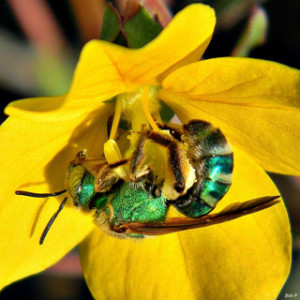
There are plenty of insects whose vibrant colors can inspire gasps of delight. Butterflies, harlequin bugs, dragonflies —who doesn’t love those little revelations when one catches our eye? Here, though, we will focus on the humble sweat bee.
The first time I saw one of these, I mean, really looked at it, I was mesmerized. It was pointed out on a walk with the Insect Sciences Museum of California, and I crept closer to take a better look. My face was inches away from the little body busily digging around in a flower, the sunlight glinting off its emerald exoskeleton and giant eyes. Its hind legs were heavy with pollen, and I flashed back to gleefully wading through a ball pit as a kid while I watched it enthusiastically shove its way through the stamens.
Since then I see them everywhere, and I usually stop for a moment to watch them go about their business. In the warmer months, this can make walking from place to place a rather lengthy process.
The family Halictidae are commonly called “sweat bees” because of their attraction to the salt in human sweat. They come in a variety of colors- from shiny black to brown, red, green, and yellow, and are one of the larger families in the order Hymenoptera. You can find them in nearly all parts of the world except Australia and parts of Asia.
Other bees can be attracted to sweat as well, but “sweat bee” technically refers to members of the Halictidae family.
Halictidae have the highest variety of behavior within the order Hymenoptera. They can be solitary, semi-social, communal, or eusocial, and that differs not only between general species behavior but also on the time of year, altitude, general location, and other factors that are as yet undetermined.
Like many bees native to California, the sweat bee nests underground-she digs a burrow in the dirt, lines it with balls of pollen for the larvae to eat once they’ve hatched, then lays her eggs. They’re also an important native pollinator. To attract these little prizes to your garden, forego the mulch (it prevents them from digging in the dirt and laying eggs) and plant some flowers for them to feast upon. They will come, oh yes, they will come.
Happy Fourth, everyone! I hope you have a great weekend —I’ll be shamelessly rattling on about Bay Area nature around mouthfuls of potato salad while waving sparklers dangerously close to my eyes. You have my permission to do the same.
Constance Taylor is a Bay Nature editorial intern and founder of Wild Oakland.

